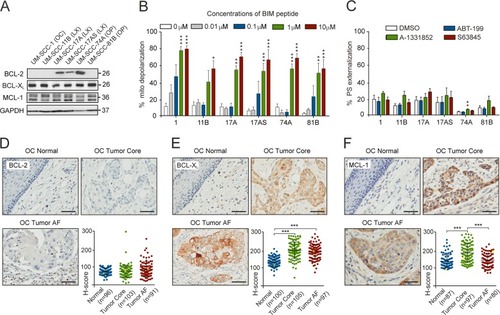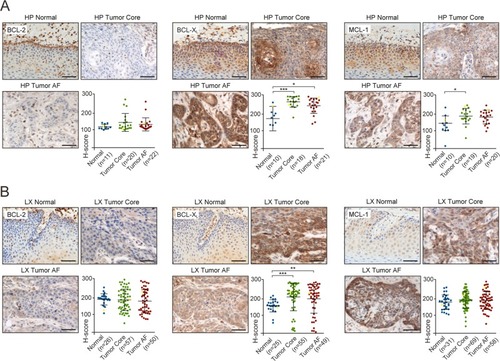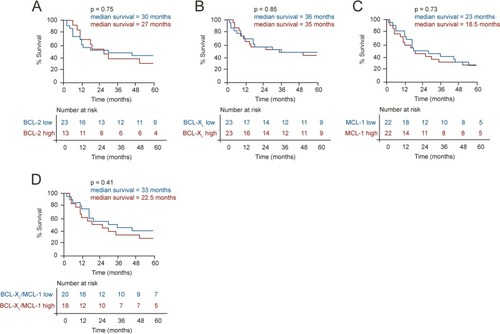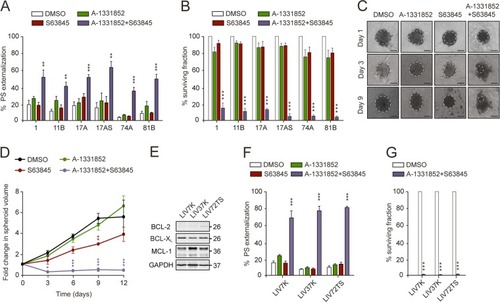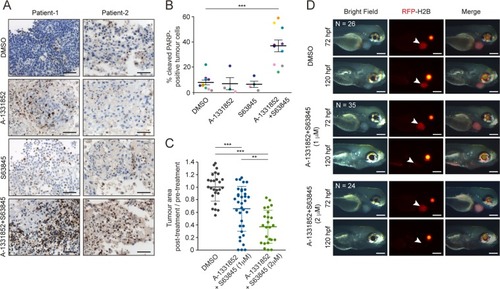- Title
-
Exploring the potential of BH3 mimetic therapy in squamous cell carcinoma of the head and neck
- Authors
- Carter, R.J., Milani, M., Butterworth, M., Alotibi, A., Harper, N., Yedida, G., Greaves, G., Al-Zebeeby, A., Jorgensen, A.L., Schache, A.G., Risk, J.M., Shaw, R.J., Jones, T.M., Sacco, J.J., Hurlstone, A., Cohen, G.M., Varadarajan, S.
- Source
- Full text @ Cell Death Dis.
|
|
|
Representative IHC images of normal tissue, primary tumor core and advancing front (AF) from |
|
Kaplan–Meier curves comparing the overall survival of patients (censored at 60 months) in the highest versus lowest quartiles for expression of |
|
SCCHN cell lines exposed to a combination of A-1331852 and S63845 (100 nM each) for 24 h exhibited |
|
PHENOTYPE:
|

